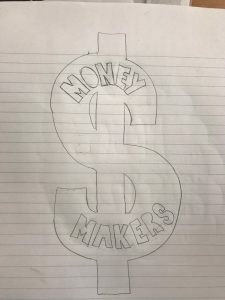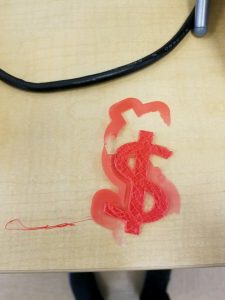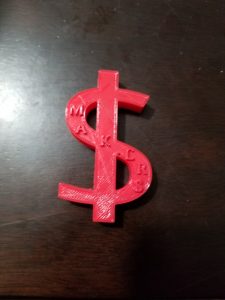This week we got the pleasure to hear from Jeff Ginger, the director of the Champaign-Urbana Community Fab Lab as our guest lecturer. It was incredibly interesting to listen and learn about all the different types of equipment that the fab lab and what all that equipment allows them to do in that space. Jeff also talked a lot about the work the fab lab does in the community and how he’s helping people of all types become makers in their own way. I was especially drawn to all of the programs they do, such as the summer camps and after school library programs, to introduce students into being more creative and giving them that ability to make things. Even using the popular video game Minecraft to develop kid’s ability to model objects on a computer was a cool thing to see and is something I would’ve never even thought of. The work that the fab lab does with students in this community is important and has inspired me to try to bring some of the programs Jeff talked about to my local community once I graduate and improve the education system that I went through as a kid.

This week in class we also got our first taste at making something and 3D printed our team logo using tinkercad and Cura. This was my first time 3D printing in 3 years but I was ready to get back at it. Once we got into tinkercad, I realized that our original logo (shown above) was going to be a little too difficult to model in the time we had in class so we decided to modify it to make it easier to print. Making the dollar sign was as simple as adding a line through the letter “s”. We decided to add the word “maker” on top of the dollar sign instead of our original design. Modeling this on tinkercad was easy and did not take long.

As shown above, our first attempt to print our logo failed because the material spooled in the back of the printer got caught on something and stopped following to the nozzle. This really hammered home the idea that 3D printing is not a perfect science and there are tons of things that can go wrong at any time. This failure was quick to fix as all we had to do was reprint it after checking to make sure the material would not get stuck again.

Overall, I liked how it came out for a first print. I think the reason the “E” didn’t come out all the way due to how small of a print it was but it was still cool to see how something we made quickly on a computer could be physically in front of us in only 36 minutes. I can’t wait to develop my skills with 3D printing as the semester continues.

Hi Norman,
I completely agree with you when you say that you had never thought of Minecraft as a way to develop kids’ abilities. I have 2 younger cousins who have been playing Minecraft for years, and I have always wondered what draw their interest to the game (as I simply didn’t care to dive into the game). Now that I understand the creator-heavy purposes of the game, it makes sense that children like to play it. In my opinion, this goes to show that our school programs desperately need to change to allow students to learn more hands-on creating skills (that they enjoy) rather than solely the textbook memorize/answer model that we have been brought up knowing.
-Scott Provenzano
Hey Norman,
I think it’s great that Jeff’s talk inspired you to think about how digital making could benefit your own community! I’m sure the Fablab staff would be happy to share thoughts or ideas to collaborate if you decided to pursue it. I also loved your logo design– it’s cool to see the end product of both attempts, and how you learned along the way. I’m personally looking forward to failing a bunch of times and figuring out how to fix things throughout this course!